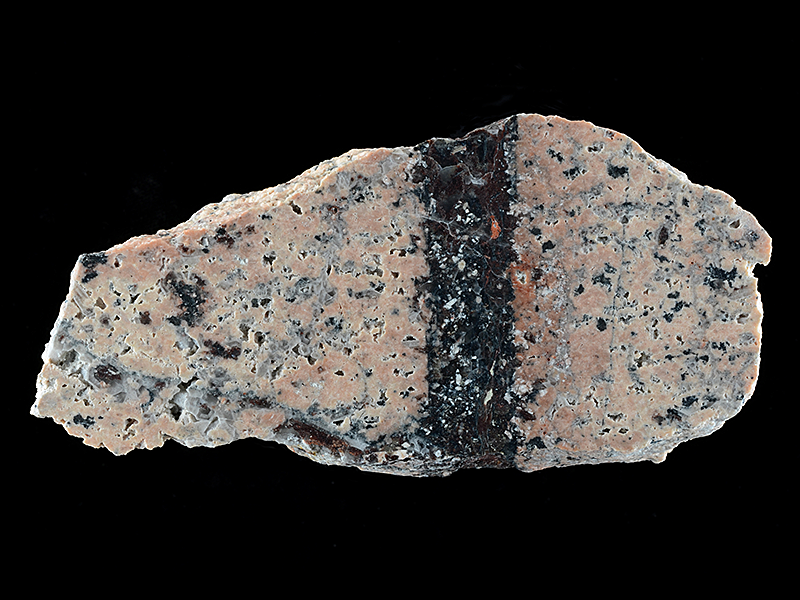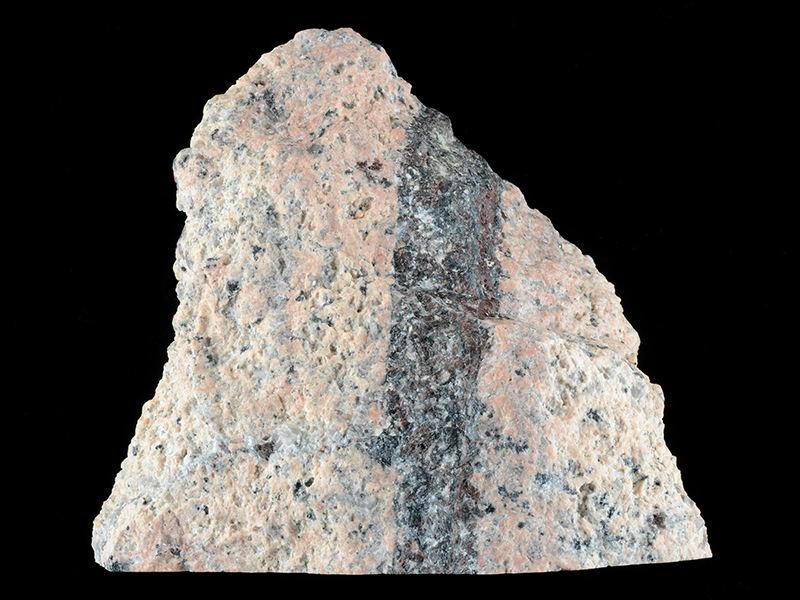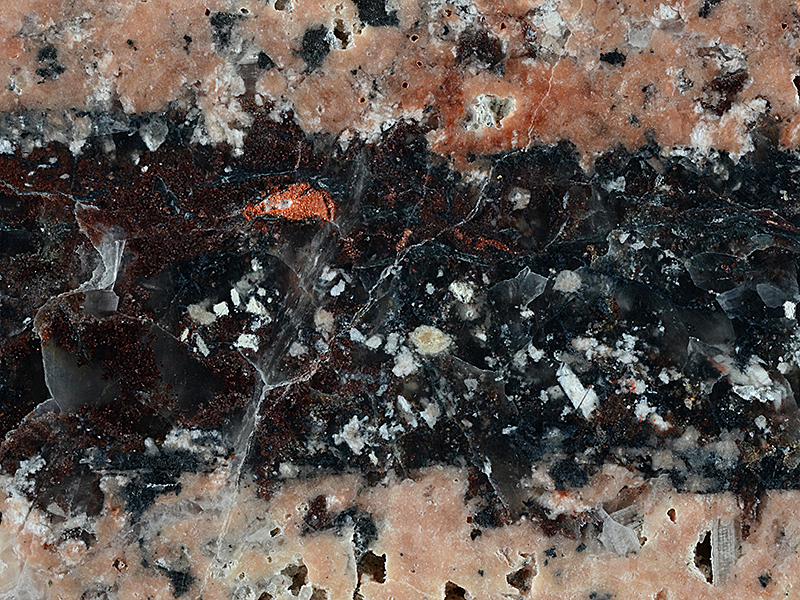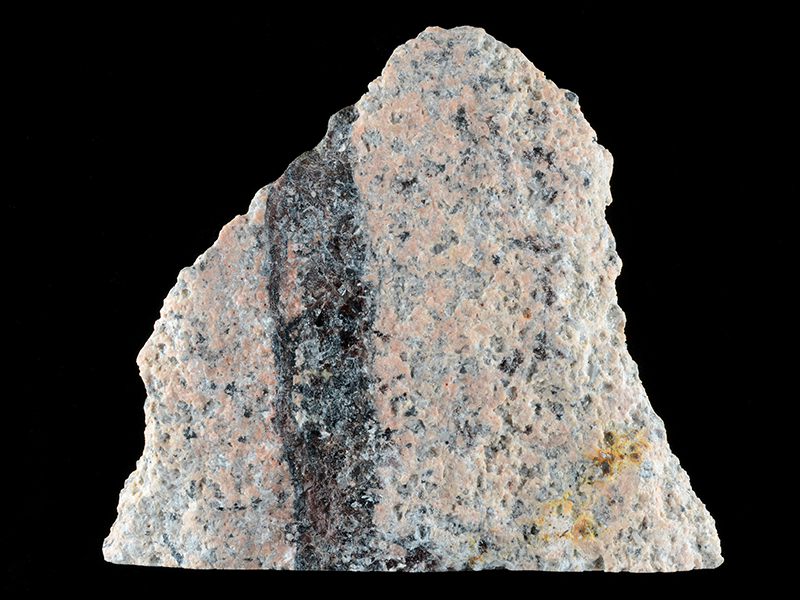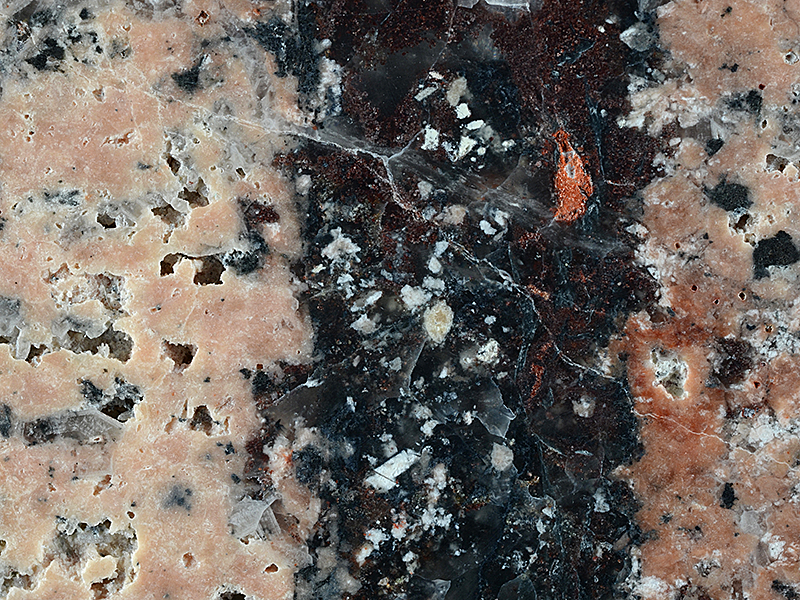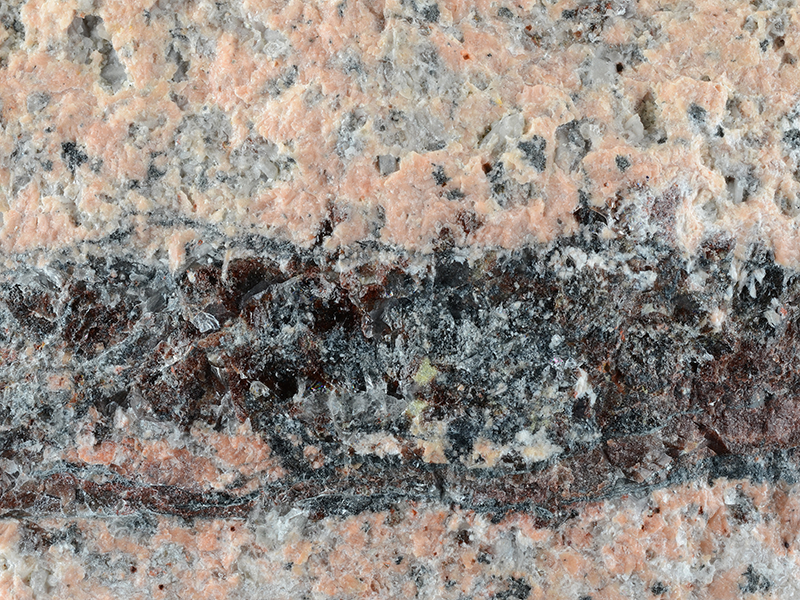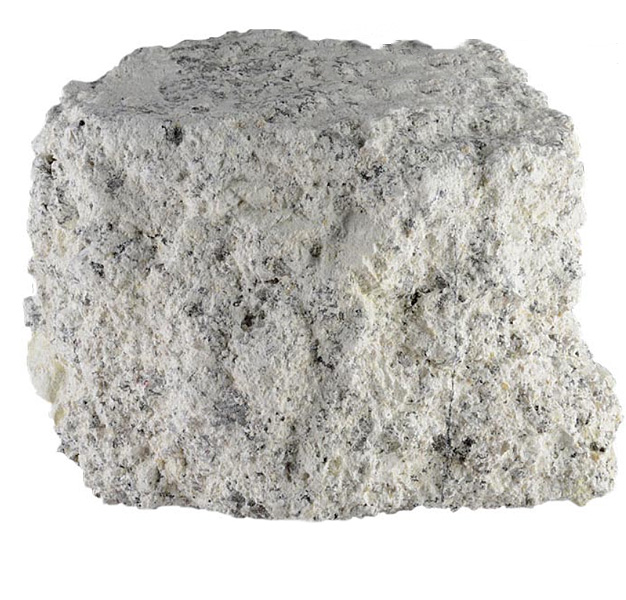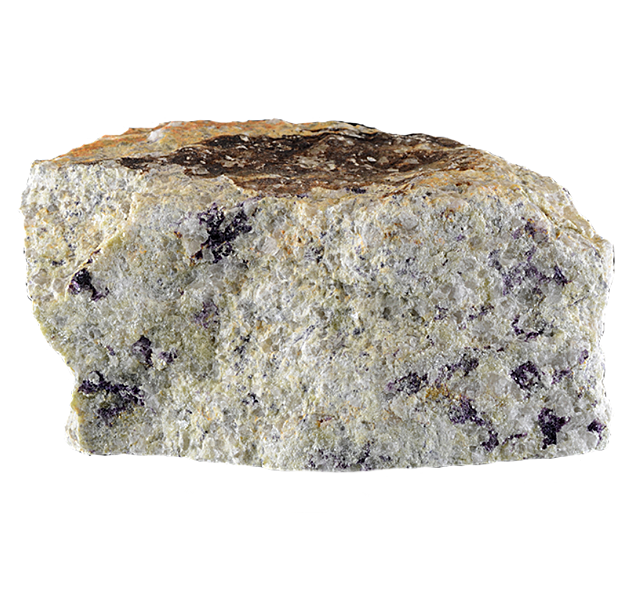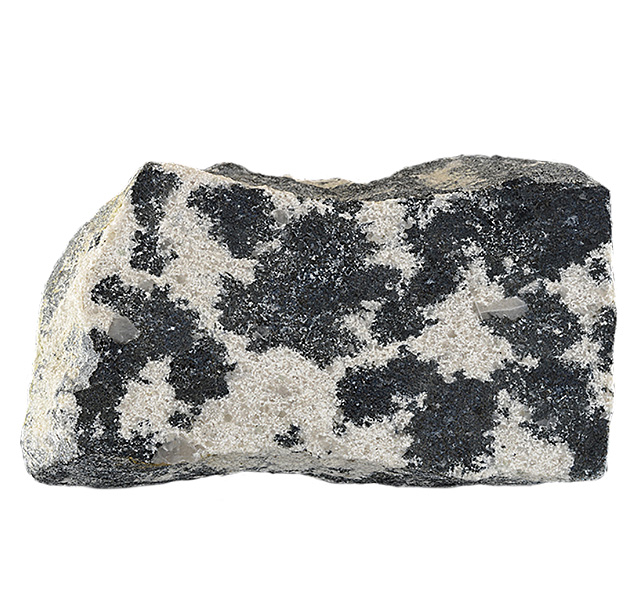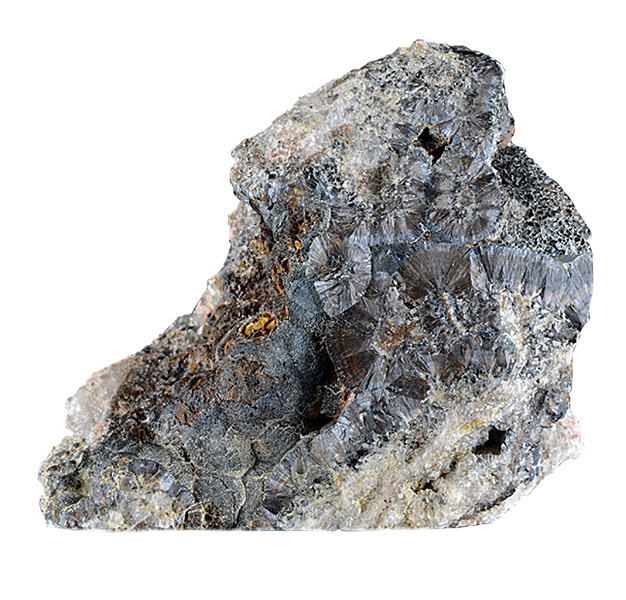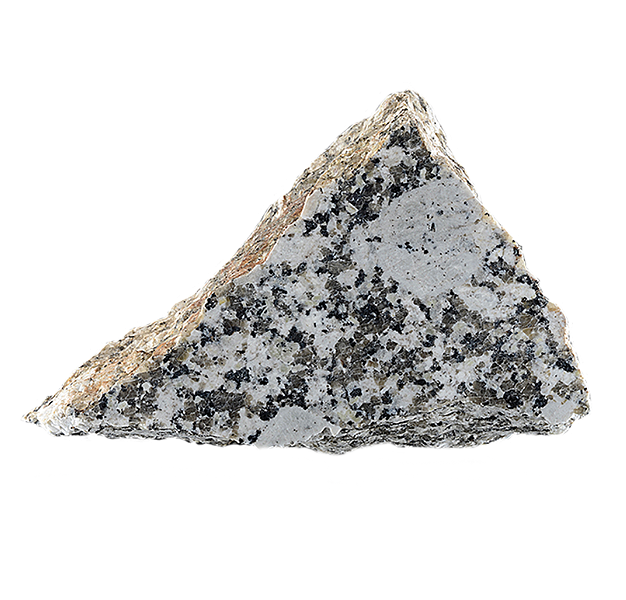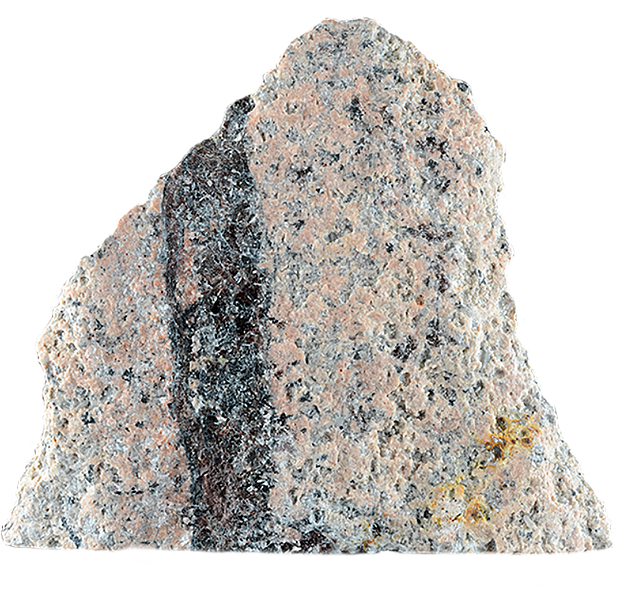
Fact sheet
This sample represents the latest, highest and coolest level of activity of the hydrothermal system at St Austell. The blue, often needle-like, tourmaline was precipitated from highly saline fluids at between 250oC and 400oC, and was followed by hematite resulted from fluids of low salinity, with temperatures in the range 160oC to 200oC. The hematite forms felted masses and wormy growths within the veins.
A case study of the St Austell granite complex in Cornwall, England, illustrating the range of rocks associated with a granite intrusion. The earliest part of the complex is a siderophyllite (biotite) granite containing muscovite and tourmaline typical of a SW England granite, with many primary magmatic features.
This early intrusion was followed by the intrusion of an evolved volatile-rich magma which was the driving force behind a series of intense hydrothermal processes as volatiles escaped from this magma and helped to establish an extensive alteration halo (aureole). Boron, fluorine and lithium (as well as water) played major roles in the formation of the second intrusion and in the associated hydrothermal processes. Igneous activity lasted around 18 million years from 282 Ma (siderophyllite granite) to 265 Ma (fluorite granite).
